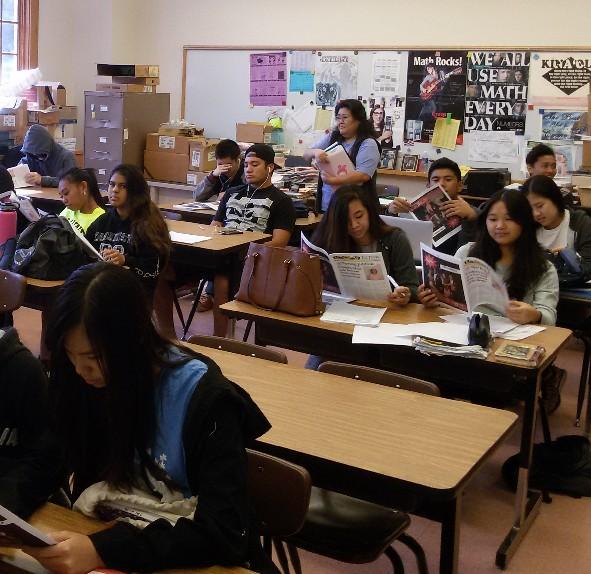American teachers get less planning time than international teachers
Senate Bill 822 sets the instructional time for Hawaii’s public schools
May 14, 2015
Senate Bill 822 set the instructional time for Hawaii’s public schools. It requires Hawaii schools to have 990 student hours in the year 2015-2016 and 1080 hours in the year 2016-2018.
Studies reveal that American teachers have more instructional time for students and less lesson planning time than international teachers.
According to the Stanford Center for Opportunity Policy in Education, research shows that American teachers usually have from three to five hours a week for lesson planning. In many other countries, teachers spend fifteen to twenty-five hours per week on lesson planning. They work with co-workers to prepare and analyze lessons, develop and evaluate assessments, observe other classrooms, and meet with parents and students. Stanford Center finds that on average American teachers spend 1080 hours annually with their students, while the international teachers spend 664 hours with their secondary students.
Teachers get paid for the hours in their contract, which is from eight o’clock in the morning to three o’clock in the afternoon. Teachers will not get paid for extra time that they work.
“Ideally, (our time) would be a mixture of both lesson planning and instructional time,” said math teacher Maude Furuya.
When asked her thoughts on extending a teacher’s paid day to four or five o’clock with extra salary, Furuya said, “Around five o’clock, the brain doesn’t function as well after teaching a group of students a long time.”
Furuya would prefer that she have prep periods with her own department teachers to collaborate in preparing for her lesson instead of collaborating with other department teachers.
Furuya said, “We are more on the individual planning.”
She would like to “share more approaches” with the other math teachers to teach her students.
What do McKinley students think about this?
Freshman Alyssa Bales said, “I don’t think it’s a problem. It just depends on the students.”
Freshman Melanie Lau said, “I think there should be an even amount for both.”





